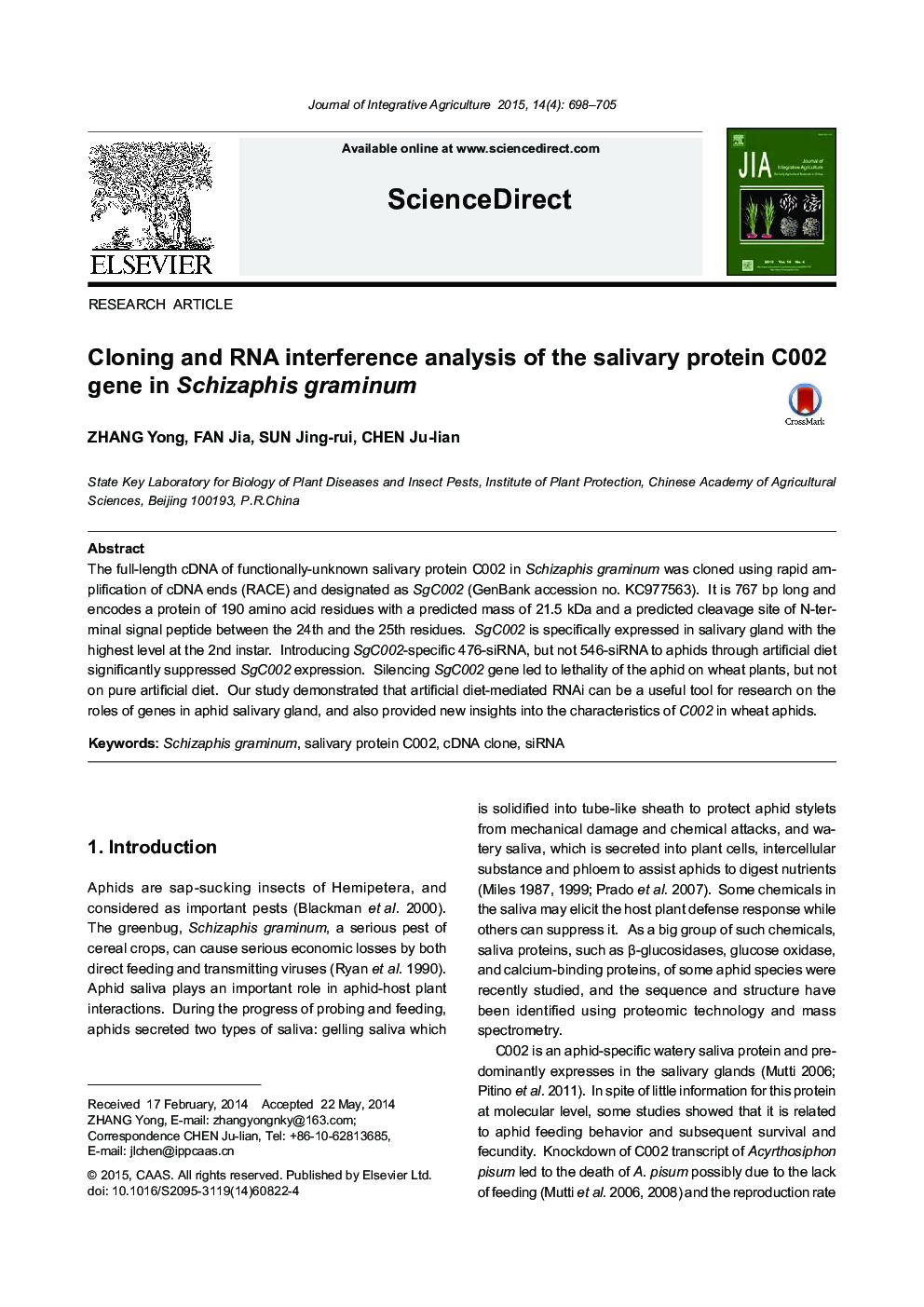| Article ID | Journal | Published Year | Pages | File Type |
|---|---|---|---|---|
| 7591568 | Food Chemistry | 2015 | 8 Pages |
Abstract
Golden, Sunrise Solo and Tainung cultivars of papaya were found to release CS2 when submitted to experimental conditions of dithiocarbamate residue analysis. Three common analytical methods were used to quantitate CS2; one spectrophotometric method and two chromatographic methods. All three methods gave positive CS2 results for all three papaya varieties. Other endogenous compounds present in isooctane extracts of papaya fractions detected via gas chromatography (GC/ITD) using electron ionization (EI) were: carbonyl sulfide, dimethyl sulfide, carbon disulfide, 2-methylthiophene, 3-methylthiophene, 2-ethylthiophene, 3-ethylthiophene, benzylisothiocyanate, benzylthiocyanate and benzonitrile. Control samples were obtained from papaya plantations cultivated in experimental areas, in which no treatment with fungicides of the dithiocarbamate group was applied. Endogenous CS2 levels were compared with true dithiocarbamate residues measured in papaya samples from the field trials following applications of the mancozeb fungicide. Three days after application, true dithiocarbamate residues, measured by the procedure with isooctane partitioning and GC-ITD, were at the average level of 2 mg kgâ1.
Related Topics
Physical Sciences and Engineering
Chemistry
Analytical Chemistry
Authors
R.B. Abakerli, R. Sparrapan, A.C.H.F. Sawaya, M.N. Eberlin, J.L.P. Jara, N.R. Rodrigues, E.F. Fay, A.J.B. Luiz, T.D.L. Galvão, D. dos S. Martins, O.K. Yamanishi, H.H.B. Toledo,
